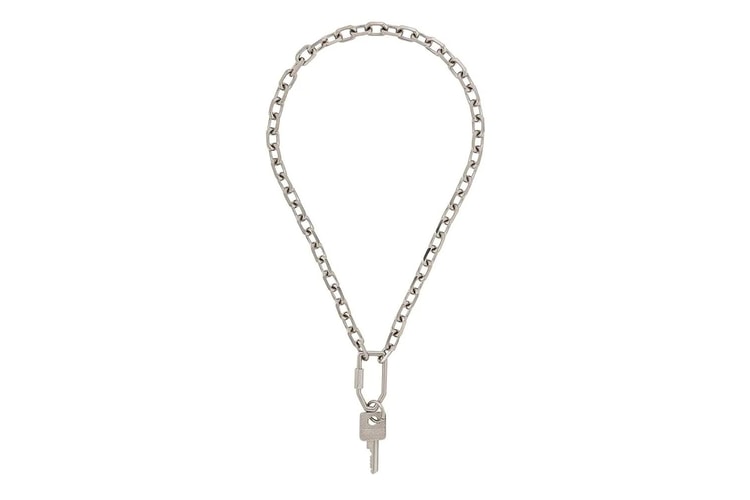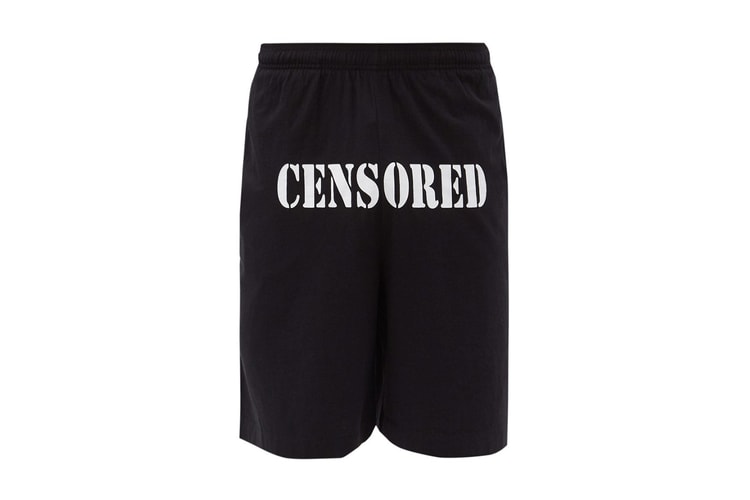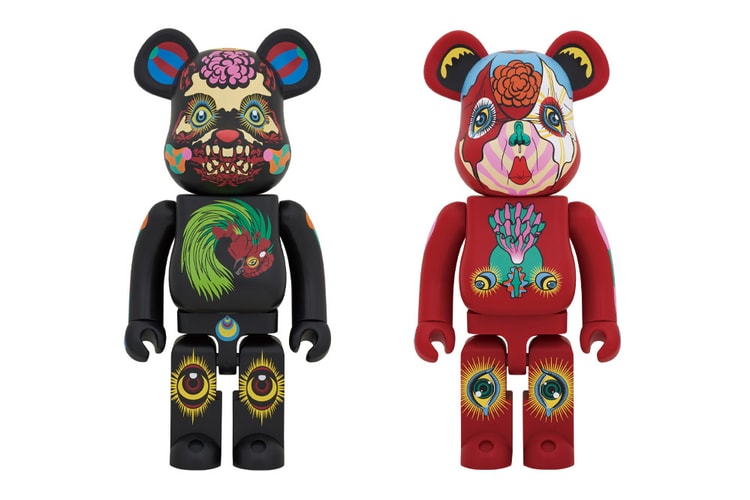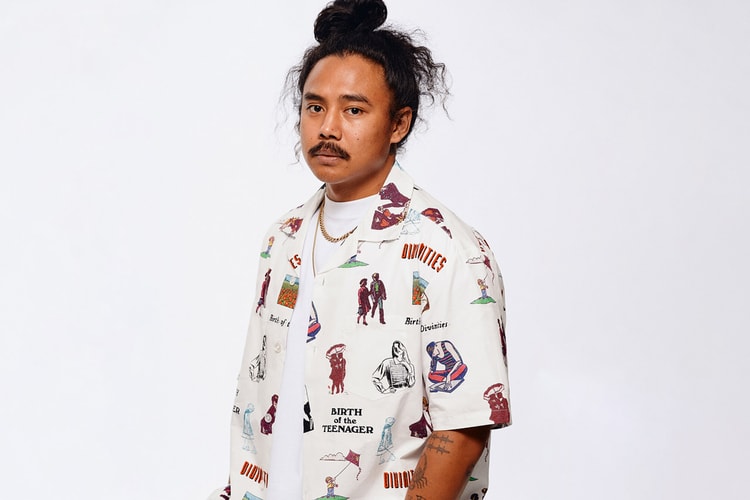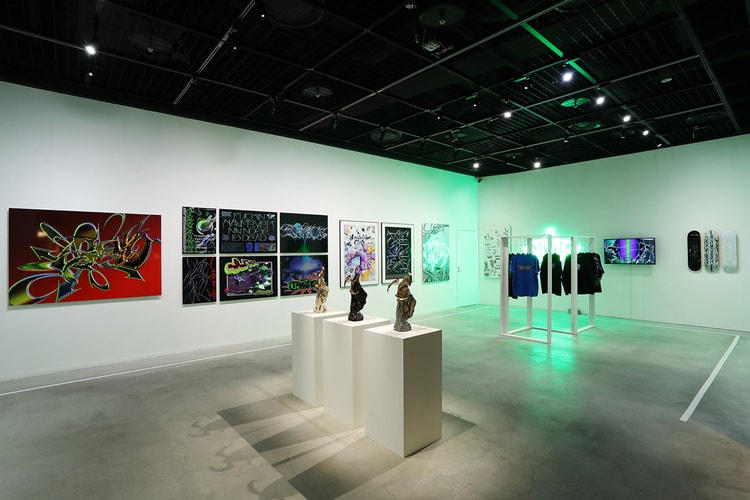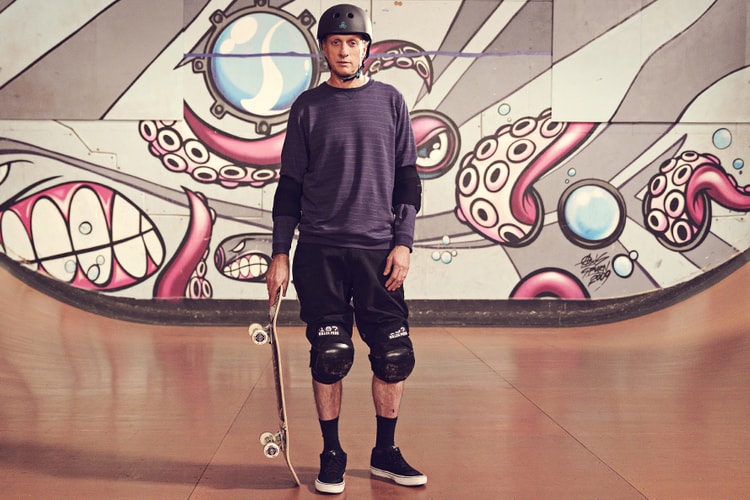Yuta Hosokawa and Cali Thornhill DeWitt Talk All Things Vintage
Speaking about their new SAINT MICHAEL project for HYPEBEAST Japan’s latest digital cover.
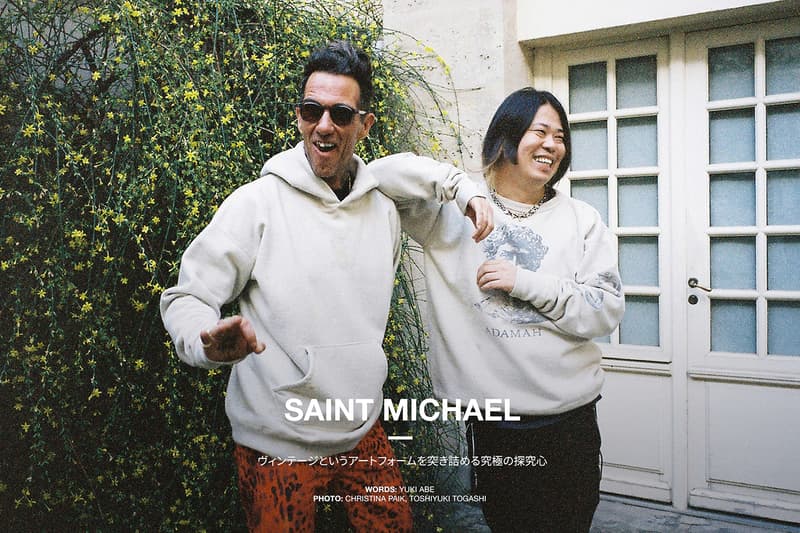
Designers Yuta Hosokawa and Cali Thornhill Dewitt have both played crucial roles in the fashion scenes of the United States and Japan. Now, the two have come together to present a new brand to the world called SAINT MICHAEL.
Yuta Hosokawa launched READYMADE in 2013 based on the concept of recycling and remaking vintage pieces. The brand’s high-quality and exclusive track pants, down jackets and bags have garnered worldwide attention. The label’s aesthetic, however, promotes a message of anti-war and anti-mass production. READYMADE has since stepped aside from the streetwear boom but continues to bask in the limelight and deliver fashion masterpieces.
Many HYPEBEAST readers may know Cali Thornhill Dewitt for his merch designs for Kanye West, but the Los Angeles-based artist plays many roles. Sometimes an owner of the record label Teenage Teardrops, sometimes the designer of Some Ware, other times a graphic designer, music video director or photographer, the multi-hyphenate creative is hard to narrow down to a particular profession. There are few like him who carry out so many projects and relentlessly go back and forth between underground and mainstream cultures.
In advance of the release of SAINT MICHAEL’s debut collection, HYPEBEAST Japan spoke to the two designers to get the inside scoop on the establishment of the brand, their relationship as designers, their production process and their pursuit of quality.
HYPEBEAST: How did you two meet?
CALI THORNHILL DEWITT: I think we met through Kubo from GR8. Is that how we met? Kubo?
YUTA HOSOKAWA: I don’t know, maybe three or four years ago?
Cali: But Kubo is super close friends separately with both of us. So it made sense.
You two already collaborated for READYMADE. How did you end up launching this brand together?
Yuta: I wanted to do something together with Cali, and so I asked him when I met him in person and he was down for it. We started off without much thought.
When was that?
Yuta: Around July 2019, I guess. I’ve been remaking and recycling clothes in READYMADE and wanted to do something related to that.
Cali: And I liked doing an ongoing project with him that was our own. Like I said, we only really started talking about it in June, but it sort of took on a life of its own and legs immediately.
Yuta: I told him I wanted to do a vintage-like brand that sells one-of-a-kind items. Cali was down with the idea, and we ended up with this style that we have now.
What are the key pieces in your debut collection?
Yuta: It’s more the fabric that is key than the item itself. Every piece is made from zero. I want to put more emphasis on the material and the same thing can be said with READYMADE, but using the same material is not easy as it seems. I feel that brands last longer if the quality of the material is acknowledged, so I want to cherish the materials.
Cali: So were you interested in secondhand fashion?
Yuta: I used to work at a thrift store. Even now, when I am working, I like to wear comfortable clothes, so most of the time I am wearing a sweatsuit.
[Pointing at the sweatshirt] Is that discharge printing?
Yuta: It’s actually soaked printing. Not discharge printing, but dyed.
“I feel that brands last longer if the quality of the material is acknowledged, so I want to cherish the materials.”
It’s very nice. Is this also paint?
Yuta: Everything is painted by hand. The distressed effect is used on every single piece [while pointing at the details] and also these stains too. Taking the clothing pieces from the 1940s and ’50s as a reference. I use an iPad too, but back then there were no computers, so I try not to rely on it so much. I use different types of colored pens when drawing the sketch.
You mentioned that you take second-hand clothing as a reference, but does that mean there is a reference piece to each product?
Yuta: Yes, there is a reference piece to each of the items. It’s not completely the same, but elements such as the material and the colors are similar in a sense. Sometimes I add graphic designs over it, but I try not to rely on the computer. In the sampling stage, there are areas where it’s not complete. Like these letters “N” and “Z” are all hand-drawn without the use of the computer. I do my best in not making the lines straight. There are many designs like that in second-hand pieces, different thickness of the lines. When it’s finalized, probably no one would realize, but there’s this feeling that you grasp, isn’t there?
You live in Osaka, and Cali lives in LA. What kind of process do you go through in working together?
Cali: Our main time talking is 10 p.m. PDT, whenever time that is here. But we usually start texting ideas and images while I am in bed. I lay there and talk to Yuta and people are like, “What are you doing?” And I’m like I’m working. Sending him pictures from today, whatever work we were discussing, that’s as far as times go that’s just how it works, but I get up early for work too, so sometimes I will text him, call him, at like 6 a.m. PDT.
Yuta: I’m not fluent in English, and there’s the time difference so whenever I am alone, I use the translator. Whenever I have my assistant around, who can speak English, I have him tell Cali the details. That’s how we communicate. I usually send images to him, asking whether he likes it or not. I’m not really good at writing in English and Cali has his own splendid style, so I have him decide the texts and messages for the design.

While exchanging ideas?
Yuta: Yes, it’s like conflating both of our ideas. Cali gives me the idea, I sketch it out, and we revise it.
That seems exciting. So there are graphic designs done by you and also Cali?
Yuta: Yes, sometimes I hand draw the design that Cali sends me. I like the imperfectness you know?
Cali: Super cool. Magic time.
So including the fabric, the production process is all done in Japan?
Yuta: Exactly. It’s all made in Japan. We had so many ideas in mind, but because it was our first collection, we wanted to focus on one piece. It may sound weird, but rather than designing several pieces like jackets and pants, we wanted to look into one piece and move on to the next when we mastered it completely. I’m the kind of person who wants to take things step by step.
The Old English lettering is one of your signature designs, but is it not incorporated in this collection?
Yuta: Not really, but there are some pieces using the lettering style.
Cali: Just a little bit. I didn’t want to use it…
Yuta: The ones used are all hand-drawn with a vintage touch to it with ink and processed into data.
Cali: I don’t want to have this one thing that I always do. Even though I love it and I made the sweatshirt that I got done in the studio when Kobe [Bryant] died, that’s what they were kind of for, memorable stuff, trying to expand on this.
I heard that you have been trying to create the exact touch of colors that are presented in the second-hand pieces.
Yuta: Yes, I have been working on it. Actually, right now, I’m making my second sample piece and putting emphasis on the effect. I didn’t really like this white-washed color, and I’m in the process of giving it a more dull touch to it.
“I’m all about vintage clothing, and I dig through documents from the past and discover many things.”
So you are aiming to obtain the quality that second-hand lovers would acknowledge.
Yuta: Exactly. I’m all about vintage clothing and I dig through documents from the past and discover many things. There are some patterns that are mysterious too. For example [pointing to the reference piece], the T-shaped sleeves are in a straight line, which is not the best silhouette. For SAINT MICHAEL, we use the same sewing machine from back then, and in terms of the details, the ribs are made uneven. No one would probably notice, but these small details add up.
It’s thought out.
Yuta: I also tried to create the same discoloration effect from stains of long-term worn pieces, by looking through different sweatshirts.
You are also particular about the fit?
Yuta: There are many pieces from second-hand clothing that do not give the ideal fit. While giving the vintage touch to it, I’m trying to apply more of a streetwear element into the silhouette.
Are there any hardships you’ve faced in starting the brand?
Yuta: I feel that anyone can make clothing, but applying “makeup” to it is pretty difficult. I struggled so much on creating the deteriorated condition, and I’m still in the process of studying how a specific part of the clothing degrades. Same can be said for the color. I contemplate on what kind of method to use in order to give the stained look.
It seems that you are particular about the brand tag too.
Yuta: For the font of the name tag, I got inspired by the reference pieces from overseas. By closely examining the tags that were hand-written, I tried to depict it the same way. When a Japanese person writes English, it’s too refined and it’s different from the native writing. For instance, when writing the letter “J,” a Japanese person would put pressure on their pen from the beginning. Those kinds of things. In order to not reflect that style onto the name tag, I carefully looked at the reference piece when writing it.
I don’t see black used in many items.
Yuta: Well, black is used in some pieces of this collection, but it is difficult to incorporate. In terms of black, sunlight causes discoloration. The actual tone is a bit different from the fade-out that is created artificially. We are experimenting with different factories and seeing how close we can get to the natural stain. Even if customers don’t realize the difference, I want to pursue it until I’m satisfied with the finished look. Maybe it’s because I’ve been seeing too much vintage clothing, but my instincts tell me it’s not right. Those small details pop up in my mind, and I find it odd.
It’s probably because you know so much about vintage clothing that you keep on pursuing the perfect look.
Yuta: In vintage clothing, you know what’s the drip at first glance as it comes to you naturally. I want people to perceive my own pieces in that way. Evoking those feelings and emotions are important. It’s difficult to describe, but there are some bits that bother me during the process of production.
You two have done many collaborations with other brands and designers in the past. What are the standards in deciding who to collaborate with?
Cali: For me, it’s generally about relationships, it’s about growing things together, collaborating with different people you get different results, so it’s also about experimentation. But I wouldn’t want to collaborate with someone I wasn’t a fan of. Just because it would feel disconnected.
Yuta: I feel the same. It‘ll likely be someone I respect.
Cali: Because when I’m on my deathbed, I’m not going to be thinking about all the great sh*t I bought, I’m going to be thinking of relationships and friendships I made. You know? Not that I’m not going to record shopping later today, but you know what I mean?
Yuta: I really respect Cali as a person and I also love his artwork. I can talk frankly with him, and maybe it’s only me who feels this way, but we bond well. I feel comfortable being with him and working with him.
Does that appear in your clothing pieces too?
Yuta: That gives me the motives to keep grinding.
Cali: Yeah, if you can communicate openly without fear and you work on something, it’s going to be good. You know? And so we have that.
How is SAINT MICHAEL going to evolve as a brand from now on?
Yuta: Cali always tells me that he wants the brand to continue existing for decades. I personally want to make staple items with not much of a design to it. A good example would be Levi’s. I’m wishing that the brand would become something like that. I also love Chrome Hearts, and their business has not changed over the years. I don’t like it when you wear trendy clothes from a year ago, and people are like “Oh, that’s from a year ago.” This does not happen with vintage clothing, which is also true for Chrome Hearts and Levi’s. I want to nurture SAINT MICHAEL into those kinds of brands.
A brand with timeless values.
Cali: Yeah 50 years. So on our 97th birthday, we are going to have a big f*cking party, and he can push me in my wheelchair and whatever, we can celebrate and we can make fire out of the archives as offering to Saint Michael. I think now everything is so fast and so, and everyone wants to be at the very top immediately. I think it is more appealing of an idea to be doing something for a long time. The kind of steady, as opposed to doing something quick for maybe the wrong reasons, that’s exciting for 10 minutes.
Yuta: That’s the best.
“My goal is to make things that I and people close to me enjoy and what happens beyond that is a gift.”
It seems like analog is one of the themes for SAINT MICHAEL, but how do you two perceive the idea of analog?
Cali: I love the feeling of holding a book, looking at a book. I mean, I read every day, but also just like analog feels real, and it kinda feels better than ever because you get it so little. So really touching things, feeling things, it’s a different way of experiencing things and we are all used to experiencing digitally right now. But there is always another generation, and you give them something analog and they are really excited. If you give them a magazine or something, they are like, “Wtf is this.” I still make zines at a coffee shop at home and just give it to people, and they like it because it is tangible.
Yuta: I feel the same. I’ve never read manga on an iPad. I would rather have the hard copy, reading it while turning over the pages.
Cali: I agree, it’s better on paper.
Yuta: It would be a shame if we no longer read or write. If everything became digital, we would no longer be humans.
These days post-street fashion has become a huge topic, but how do you and the others around you perceive the situation?
Cali: I just think everything grows and evolves. I don’t really spend enough time thinking about it. I don’t really spend enough time thinking about what’s next. I kinda prefer to just go forward. And to also backtrack to the way you said who you want your consumer to be, it’s sort of the same thing. My goal is to make things that I and people close to me enjoy and what happens beyond that is a gift.
Yuta: I feel the same as Cali. There are only three, four people on our team, so it is difficult to do this and that. We want to stick to one item and pursue that, maybe creating a body that no one would be able to copy. I want the pieces from SAINT MICHAEL to be perfect in an imperfect way. I think the vintage-like look is the exquisite kind of imperfectness. Creating that look is very difficult. I even tell the seamstress to close their eyes and sew straight. When it comes to work, Japanese people are precise. They even give only five millimeter-wide seam allowance when sewing. But when it comes to American people, the width can be two centimeters as they lacked accuracy. When washing it though, the two centimeters gives a good finish to the whole piece.
Cali: Magic happens when you are in the middle. If you are too far on this side, too far on that side, you kinda control the outcome, that’s when I think things get f*cked up. In the middle there is room for more.














